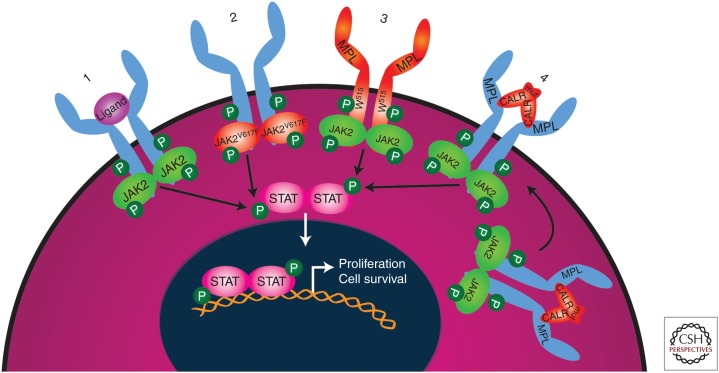Figure 1.
Mutations activating the JAK-STAT signaling pathway are sufficient to cause myeloproliferative neoplasm. In the normal situation (1), the JAK-STAT signaling pathway is activated on binding of a ligand to type I cytokine receptors including MPL (thrombopoietin [TPO] receptor), the erythropoietin (EPO) receptor, and granulocyte colony-stimulating factor (G-CSF) receptor. Activation of the JAK-STAT signaling pathway causes cell proliferation and survival of the relevant myeloid lineage cells. When JAK2 is constitutively active owing to mutations such as V617F (2), downstream signaling from type I cytokine receptors is increased, leading to clonal expansion of hematopoietic stem cells (HSCs), increased erythropoiesis (EPOR), thrombopoiesis (MPL), and granulopoiesis (G-CSFR). Situation (3) shows that MPL mutations at position W515 activate JAK-STAT signaling. In situation (4), mutant CALR develops a pathogenic binding interaction with MPL (but not with EPO or G-CSF receptor) that activates JAK-STAT signaling. In situations (3) and (4), because only the MPL receptor is involved, JAK-STAT pathway activation is restricted to MPL-expressing hematopoietic stem cell (HSC) and megakaryocyte lineage cells resulting in thrombocytosis. Mutated proteins are depicted in orange. P, Phosphorylation.

